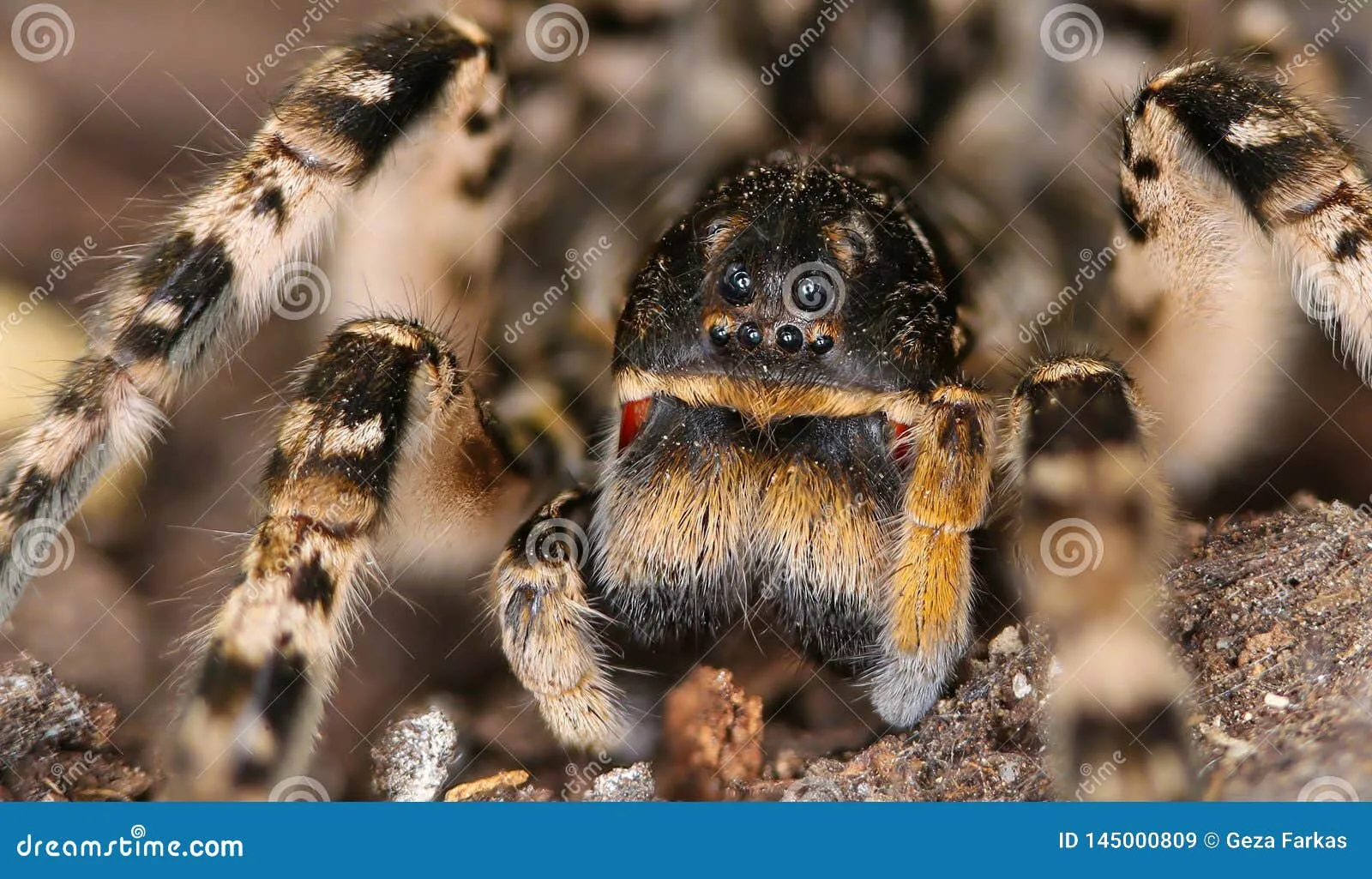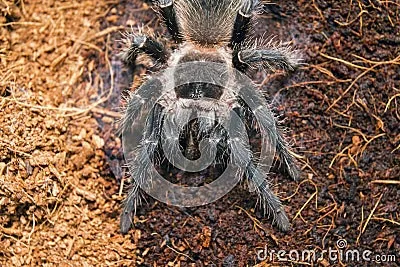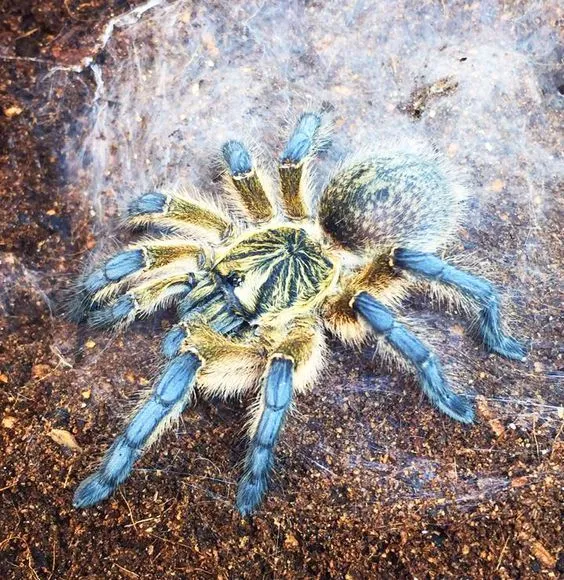What Makes a Tarantula Spider Deadly
The term “deadly” when applied to tarantula spiders requires careful consideration. While tarantulas possess venom and can inflict bites, they are generally not considered deadly to humans in the same way as some other venomous creatures. Their bites are often compared to a bee sting, causing localized pain, redness, and swelling. However, various factors determine the potential severity of a tarantula bite, including the spider species, the amount of venom injected, and the individual’s sensitivity or allergic reaction. Understanding the nuances of tarantula venom, physical defenses, and behavior is essential to grasp their true nature and assess their potential danger. This guide will delve into the aspects of tarantula spiders that might make them appear ‘deadly’ while debunking myths and providing factual information about their interactions with humans and the environment.
Venom and Toxicity
Tarantula venom is complex, containing various enzymes and toxins designed to subdue prey. The primary purpose of the venom is to immobilize small creatures like insects and other invertebrates. However, the potency of the venom can vary significantly among different tarantula species. Some species have more potent venom than others, influencing the severity of a bite. Additionally, the amount of venom injected during a bite can vary, further affecting the outcome. While the venom can cause pain and localized symptoms in humans, it is rarely life-threatening. It’s important to note that the medical significance is generally low, but allergic reactions are possible, which can lead to more severe systemic responses.
The Potency of Tarantula Venom

The potency of tarantula venom is a critical factor in determining the severity of a bite. Research suggests that tarantula venom is not as potent as that of many other venomous animals. Its primary function is to paralyze and digest prey. Studies have examined the composition of tarantula venom, identifying various compounds and their effects. These compounds include enzymes, peptides, and other substances that interfere with the nervous system and muscle function of the prey. While tarantula venom can cause pain, swelling, and muscle cramps in humans, it rarely leads to severe systemic effects like paralysis or organ failure. The venom’s composition and concentration vary by species, influencing its overall impact. Understanding this potency is vital in assessing the potential dangers of a bite.
Effects of a Tarantula Bite on Humans
The effects of a tarantula bite on humans are typically localized and relatively mild. The immediate symptoms often include pain, redness, swelling, and itching at the bite site. Some individuals might experience muscle cramps or stiffness. The venom itself is not highly toxic to humans, so systemic reactions are uncommon. However, some people may have allergic reactions, leading to more severe symptoms such as hives, difficulty breathing, or even anaphylaxis in rare cases. If a bite occurs, it’s crucial to clean the area, apply ice, and monitor for any signs of a severe reaction. Medical attention is usually not necessary unless the symptoms become severe or if an allergic reaction is suspected. The overall impact is minor compared to bites from other venomous creatures.
The Myth of the Deadly Tarantula
Popular culture often portrays tarantulas as highly dangerous and deadly spiders. However, this is a misconception. In reality, the venom of most tarantula species is not potent enough to be life-threatening to humans. The fear often stems from their large size, hairy appearance, and the potential for a painful bite. While tarantulas do have defenses, their primary aim is to ward off predators, not actively seek to harm humans. Most bites result from defensive actions when a spider feels threatened. Common myths, fueled by movies and folklore, exaggerate the dangers. Addressing and debunking these myths is critical to understanding the real risks and appreciating the true nature of tarantulas as relatively harmless creatures. Education and accurate information can help dispel the fear and promote respect for these fascinating spiders.
Are Tarantulas Aggressive Spiders

Tarantulas are generally not aggressive spiders. They are typically docile and prefer to avoid confrontation. Bites usually occur only when the spider feels threatened, such as when it is handled or feels cornered. They are more likely to exhibit defensive behaviors, like raising their front legs, flicking urticating hairs, or retreating, rather than actively attacking. Their behavior is primarily determined by their instinct to survive. This means they try to flee from perceived threats rather than initiating an attack. While some species might be more prone to biting than others, most tarantulas are quite shy and prefer to hide in their burrows or under cover. The circumstances of their environment and their level of stress or comfort profoundly influence their behavior. Understanding their non-aggressive nature is key to safe interactions.
Common Myths About Tarantulas
Numerous myths surround tarantulas, often exaggerating their danger and aggressiveness. One prevalent myth is that tarantulas are highly venomous and can kill humans with a single bite. In reality, their venom is generally not life-threatening to humans. Another myth suggests that tarantulas actively hunt humans. The truth is tarantulas are opportunistic hunters and are not interested in pursuing large prey. Many people believe that tarantulas are extremely aggressive. However, most tarantulas are more likely to flee from danger than attack. Dispelling these myths through accurate information helps to reduce unnecessary fear and promote a more realistic understanding of these spiders. Education about tarantula behavior, venom, and defensive mechanisms will correct misconceptions and foster appreciation for them.
Physical Characteristics and Defenses
Tarantulas possess several physical characteristics and defensive mechanisms to protect themselves from predators. One key feature is their large size, which can be intimidating to potential threats. They have powerful chelicerae (fangs) used to inject venom and capture prey. Many species also have urticating hairs on their abdomen, which they can flick toward threats, causing irritation and discomfort. Their coloration and camouflage are also part of their defense strategy, allowing them to blend into their environment and avoid detection. These physical attributes and behaviors work together to enhance the spiders’ chances of survival. The combined use of size, fangs, hairs, and camouflage makes these creatures very successful at surviving in their environment.
Fangs and Chelicerae

Tarantulas have robust fangs, technically called chelicerae, which are essential for their survival and hunting. These fangs are sharp and used to inject venom into prey. The size of the fangs varies among different species, but they are generally large and capable of delivering a painful bite. The chelicerae work in a scissor-like action to grasp and pierce prey. Along with venom, these structures are critical for capturing, subduing, and consuming their food. The structural design of these fangs shows a remarkable adaptation for their predatory lifestyle. Careful handling and understanding the functionality of the chelicerae are important when dealing with tarantulas. Their capacity to use these fangs effectively allows them to thrive.
Defensive Hairs and Irritation
Many tarantula species have urticating hairs on their abdomen. These hairs are a primary defense mechanism against predators. When threatened, the tarantula will flick these hairs towards the potential threat. The hairs are barbed and can cause irritation, itching, and inflammation if they come into contact with skin or eyes. The severity of the reaction can vary depending on the species of tarantula and the sensitivity of the individual. These hairs serve as a deterrent, discouraging predators from pursuing the spider further. This defensive strategy is a key element in their survival strategy. Understanding and taking precautions to avoid the urticating hairs is an important part of interacting with tarantulas.
Geographic Distribution and Habitat
Tarantulas are found worldwide, inhabiting a diverse range of environments. They are commonly found in tropical and subtropical regions of the Americas, Africa, Asia, and Australia. Their habitats include grasslands, deserts, rainforests, and woodlands. They are highly adaptable, living in various microclimates and utilizing different shelters, such as burrows, under rocks, or within trees. The specific environment depends on the species. Some tarantulas are terrestrial, while others are arboreal, living in trees. This wide geographical distribution and habitat diversity reflect their evolutionary success and ability to thrive in various conditions. Climate and availability of prey strongly influence their presence in a region. The study of their distribution offers insights into the biodiversity and ecological relationships of their ecosystems.
Where Deadly Tarantulas Live

The regions where tarantulas live vary significantly, influencing the perceived danger. Tarantulas live in warm, humid climates, and their presence is influenced by both temperature and humidity. They are typically found in the Americas, Africa, Asia, and Australia. Some of the most well-known tarantula species inhabit the rainforests of South America, while others thrive in the deserts of the southwestern United States. The specific species and habitats of these spiders vary depending on the geographic location. Understanding their specific habitats is essential for conservation efforts and awareness. The presence of tarantulas in certain areas poses a moderate risk, and local residents should be aware of these potential interactions.
Factors Influencing Toxicity
Several factors can influence the toxicity of tarantula venom. The species of the tarantula is a major determinant, with some species having more potent venom than others. The spider’s age and health can also affect venom composition. Environmental factors, such as diet and habitat, can subtly influence venom’s effectiveness. The amount of venom injected during a bite further determines the severity of the effects. Furthermore, the individual’s sensitivity to the venom also contributes to the outcome of the bite. These variables complicate the understanding of the actual level of danger. Studying these factors helps scientists and medical professionals to comprehend the potential risks involved in tarantula interactions. Proper knowledge about these factors can lead to more effective first aid and medical treatments.
Tarantula Spider Conservation
Tarantula spider conservation is increasingly important due to habitat loss, climate change, and the pet trade. Many tarantula species are vulnerable and require protective measures to ensure their survival. Conservation efforts include habitat preservation, captive breeding programs, and education about tarantulas’ ecological roles. Protecting their natural habitats is critical, as it provides the necessary resources and shelter for these spiders. Captive breeding helps maintain genetic diversity and reduce pressure on wild populations. Public education can dispel myths and promote respect and understanding of tarantulas. The combination of these efforts helps safeguard tarantulas and their habitats. Conservation measures enhance the protection of these unique and important spiders.
Threats to Tarantula Populations

Tarantula populations face numerous threats, including habitat destruction due to deforestation, urbanization, and agricultural expansion. The pet trade also poses a significant threat, with many tarantulas being collected from the wild for the exotic pet market. Climate change exacerbates these threats by altering habitats and affecting prey availability. Pesticide use also has a negative impact, as it can eliminate the tarantulas’ food source. Addressing these threats is essential for ensuring the long-term survival of tarantulas. Reducing habitat loss, regulating the pet trade, mitigating the effects of climate change, and minimizing pesticide use are essential for protecting these spiders. These challenges highlight the urgent need for comprehensive conservation strategies.
How to Protect Tarantula Spiders
Protecting tarantula spiders involves a combination of individual and community efforts. Supporting habitat conservation initiatives is vital. Reducing human impact on their environments through responsible land use and sustainable practices is also essential. When keeping tarantulas as pets, ensuring they come from ethical sources is important, such as reputable breeders. Educating others about these spiders can help dispel myths and misconceptions, promoting respect and understanding. Public awareness campaigns can advocate for responsible pet ownership and reduce the demand for wild-caught spiders. By working together, people can improve the survival of these fascinating arachnids.
